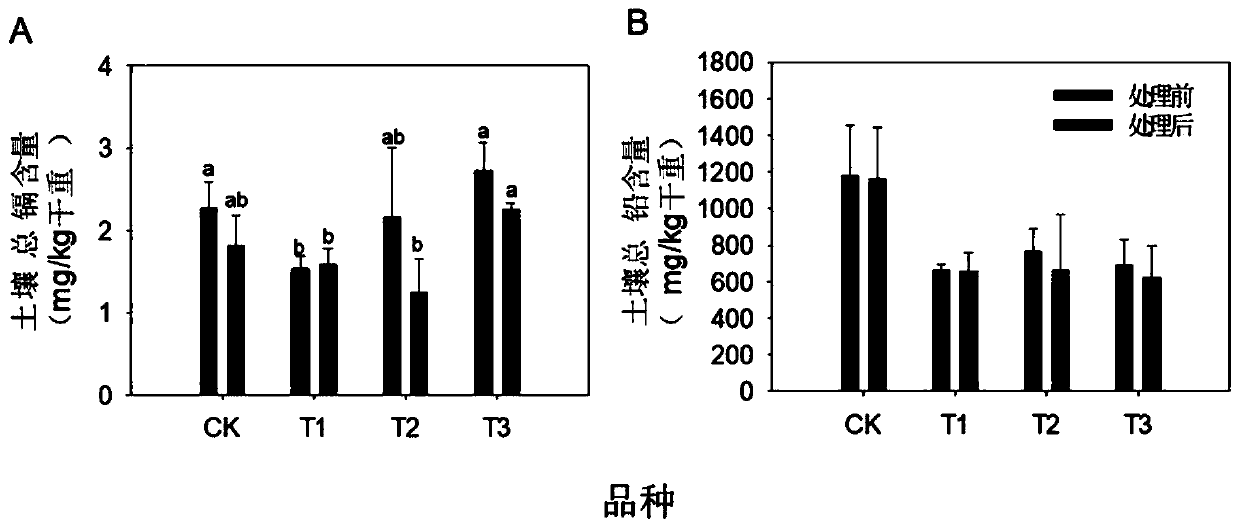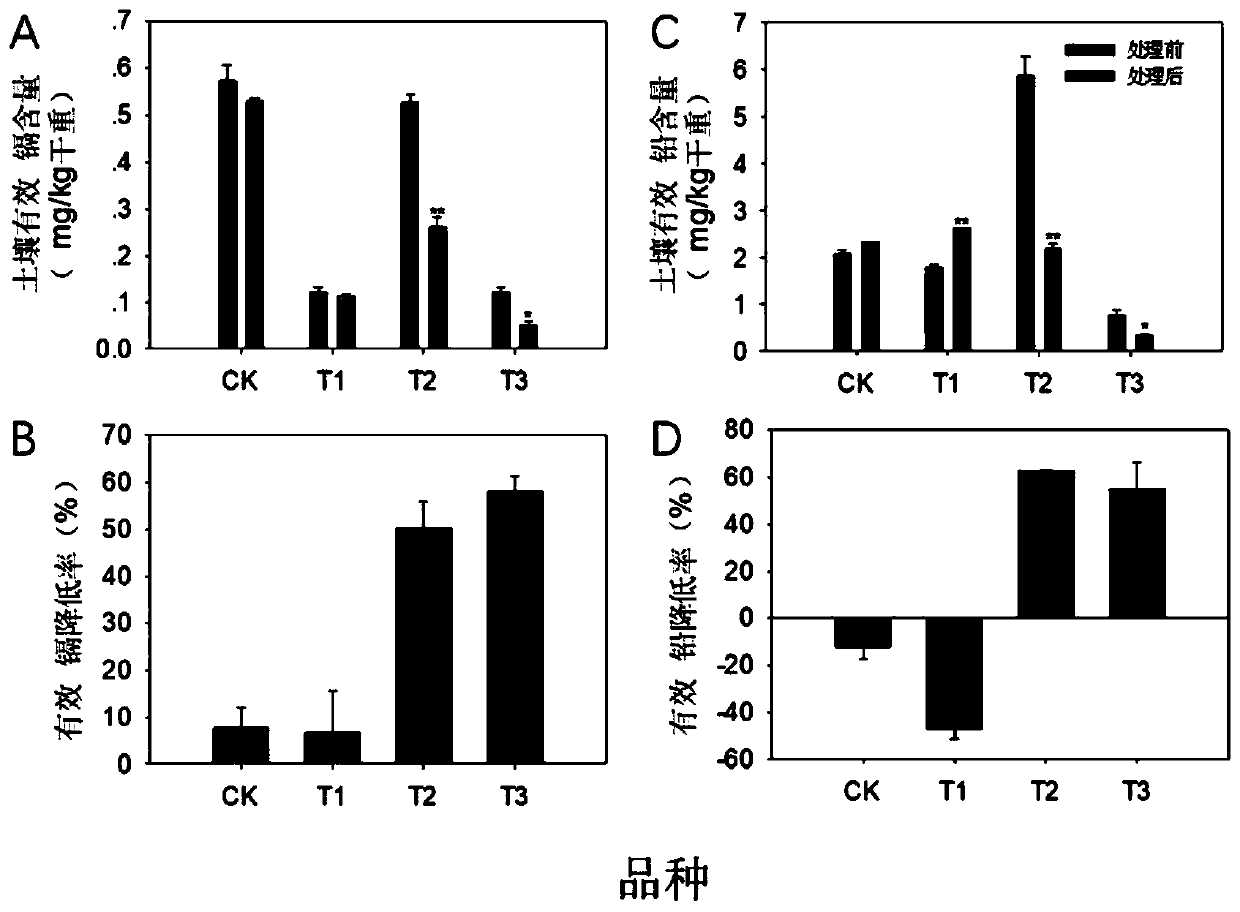Method for safely utilizing heavy metal polluted cultivated land based on combination of charcoal in-situ passivation and sweet sorghum planting
A technology of sweet sorghum and heavy metals, which is applied in the field of safe use of heavy metals to pollute cultivated land, and can solve problems such as differences in the ability to absorb heavy metals
- Summary
- Abstract
- Description
- Claims
- Application Information
AI Technical Summary
Problems solved by technology
Method used
Image
Examples
Embodiment 1
[0029] 2. Materials and methods
[0030] 2.1 Materials
[0031] 2.1.1 Sweet sorghum varieties
[0032] The varieties of sweet sorghum used in this work can be obtained from the National Plant Germplasm System (NPGS) of the United States, and can also be obtained from the following literature: Jia WT, Miao FF, Lv SL, et al. Identification for the capability of Cd-tolerance, accumulation and translocation of 96sorghum genotypes [J]. Ecotoxicology and Environmental Safety, 2017, 145:391–397.
[0033]The three varieties with low cadmium absorption are GRASSL (D1, No. 27; NPGS code PI 154844), MN 4578 (D2, No. 69; NPGS code PI 273969), SMITH (D3, No. 76; NPGS code PI 511355) ; The control variety with high cadmium absorption is NO.5GAMBELA (G1, No. 64; NPGS code name is PI 257599).
[0034] 2.1.2 Soil passivation agent
[0035] The passivator used was coconut shell biochar, which was purchased from Dongjiao Coconut Activated Carbon Factory in Wenchang City, Hainan. Limestone (...
PUM
 Login to View More
Login to View More Abstract
Description
Claims
Application Information
 Login to View More
Login to View More - R&D
- Intellectual Property
- Life Sciences
- Materials
- Tech Scout
- Unparalleled Data Quality
- Higher Quality Content
- 60% Fewer Hallucinations
Browse by: Latest US Patents, China's latest patents, Technical Efficacy Thesaurus, Application Domain, Technology Topic, Popular Technical Reports.
© 2025 PatSnap. All rights reserved.Legal|Privacy policy|Modern Slavery Act Transparency Statement|Sitemap|About US| Contact US: help@patsnap.com



